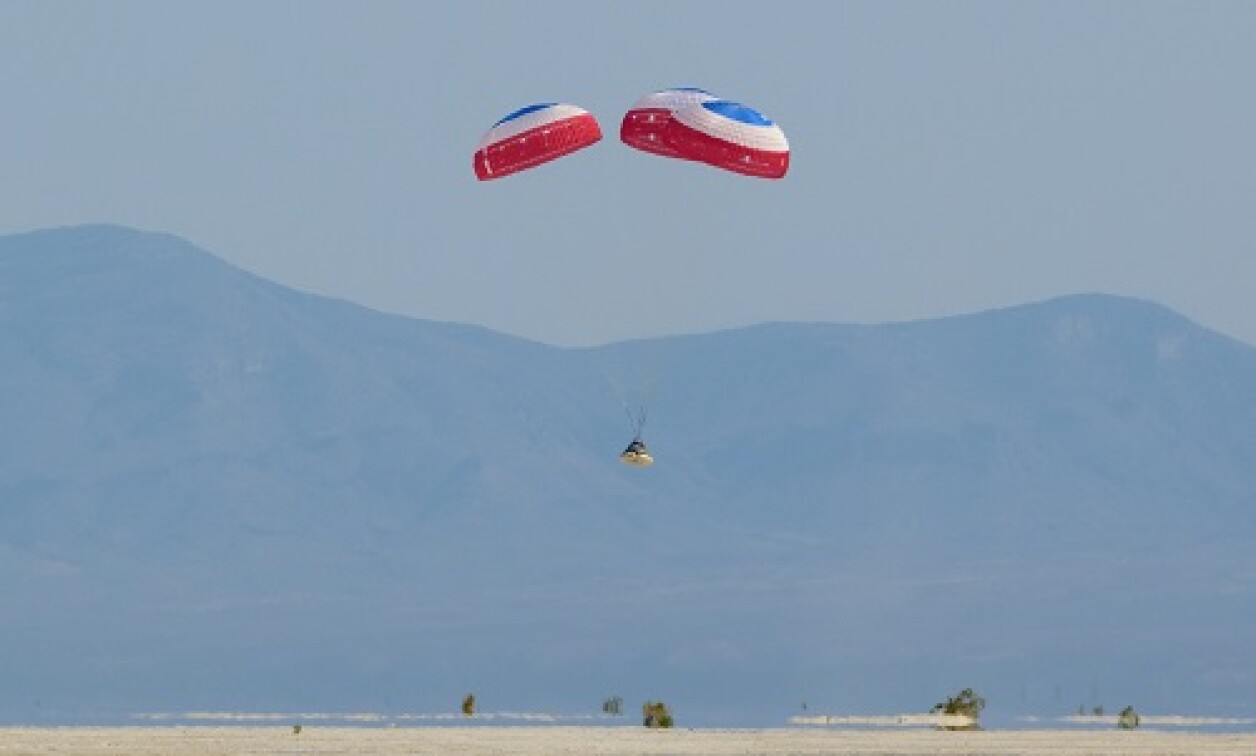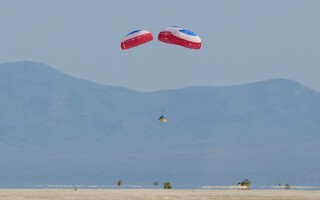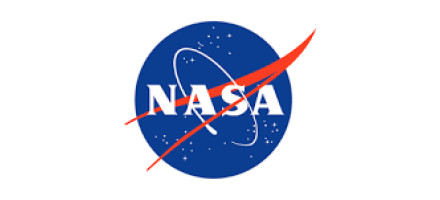D
Deleted member 118
Guest
Is Akida now going to Venus as well?
NASA Innovative Advanced Concepts
Lightweight Multifunctional Planetary Probe for Extreme Environment Exploration and Locomotion
Active Technology Project (2020 - 2022)
Project Introduction
With many characteristics similar to Earth, Venus has long been considered of high scientific interest to NASA. The Venus surface temperatures near 460°C and pressures of 93 bar have made long duration surface missions infeasible. The atmosphere is also caustic and has a dense cloud layer resulting in poor topography mapping, requiring either hazard tolerant landing systems with significant mass penalties, or the exclusion of landing sites with rough terrains due to safe landing concerns at the expense of scientific value. The Tension Adjustable Network for Deploying Entry Membrane (TANDEM) concept is a lightweight vehicle developed to operate in Venusian extreme environment. TANDEM's unified design is capable of handling all aspects of Entry, Descent, Landing, and Locomotion (EDLL) through an integrated tensegrity and deployable semi-rigid heat shield design. Most proposed EDLL concepts utilize separate systems for each stage, resulting in significant mass penalties due to the need to carry systems not in continual use over the life of their respective missions. The design of TANDEM uses an actively controlled tensegrity frame for entry and descent that are also used for landing and locomotion. This enables TADEM to gather science data during its descent stage as well as on the surface. The truss-like configuration of the frame of TANDEM is a lightweight design that allows for a high payload to structural mass ratio, leading to a significant mass reduction. Phase I demonstrated that for a mission to the rugged tessera regions, the mass of TANDEM is 49% lighter than the VITaL, and 33% lighter than the ADEPT-VITaL concept missions. TANDEM’s design distributes the impact landing loads across its entire frame, providing an omnidirectional protection for the payload. This is ideal for landed missions to Venus where only low-resolution topography maps exist. The Phase I investigations suggest that a properly configured TANDEM vehicle can safely land and perform science measurements on the tessera terrains. Phase II will advance the development of TANDEM with the goal of increasing its TRL. Through continued collaboration with NASA Ames, various control methods using machine learning will be investigated to allow TANDEM to perceive and navigate rough terrains with characteristics similar to the proposed mission sites using coupled integrated vision system and spiking neural network. These control methods will be designed based on the NASA Tensegrity Robotics Toolkit and verified experimentally using a prototype. Various failure modes, such as removing a cable along the TANDEM's frame, will also be examined to assess the design redundancies and ensure continuous locomotion of the vehicle in case of damage or malfunction. As TANDEM is a multifunctional vehicle, raising its TRL requires tests in all phases of EDLL. Non-flight rated prototypes of various complexity will be developed to test system's functionality and performance during several mission critical events including, but not limited to, entry and descent membrane deployment and tensioning, impact, and locomotion. While the prototypes and subsystems will be tested in a laboratory environment, their designs will incorporate the limitations of the extreme conditions required for operation on the surface of Venus. The design space will be explored through numerical simulations, and
Printed on 05/22/2022 03:44 PM AEST
For more information and an accessible alternative, please visit:

 techport.nasa.gov
Page 1
techport.nasa.gov
Page 1
Graphic Rendering of the Lightweight Multifunctional Planetary Probe for Extreme Environment Exploration and Locomotion. Credits: Javid Bayandor
Table of Contents
Project Introduction 1 Anticipated Benefits 2 Primary U.S. Work Locations and Key Partners 2 Organizational Responsibility 2 Project Management 2 Technology Maturity (TRL) 2 Technology Areas 3 Target Destination 3 Images 4
NASA Innovative Advanced Concepts
Lightweight Multifunctional Planetary Probe for Extreme Environment Exploration and Locomotion
Active Technology Project (2020 - 2022)
validations through testing. The simulations and tests planned for this study will raise the concept's technology readiness from TRL2 to TRL3, and up to TRL4. The Phase II investigations will bring together academia with various NASA centers (Ames, LaRC, and KSC) and their individual expertise to highlight how TANDEM with its unmatched level of adaptability can enable missions to harsh planetary environments, such as Venus and Mercury. The relevant critical technologies developed can further enable complex guided traverse and sustained functionality on any high-risk landing sites.
Anticipated Benefits
Tension Adjustable Network for Deploying Entry Membrane (TANDEM) is a new lightweight planetary probe concept that combines the Entry, Descent, and Landing functionalities with the surface locomotion (EDL-L) into a single multifunctional tensegrity module. TANDEM’s agility allows in- situ exploration of the roughest geological structures of Venus, the Tesserae. The design reduces the extreme G-loading at entry and dramatically increases mane- uverability post entry and during descent. It further enables safe landing over unknown terrains and offers effective surface locomotion, while 30-50% lighter than other modern Venus In-situ explorers. TANDEM can be used for Mars and Moon exploration.
Primary U.S. Work Locations and Key Partners
Organizational
Responsibility
Responsible Mission Directorate:
Space Technology Mission Directorate (STMD)
Lead Organization:
SUNY Buffalo State
Responsible Program:
NASA Innovative Advanced Concepts
Project Management
Program Director:
Jason E Derleth
Program Manager:
Eric A Eberly
Principal Investigator:
Javid Bayandor
Technology Maturity
(TRL)
Start: 2 Current: 2 Estimated End: 3
123456789
Printed on 05/22/2022 03:44 PM AEST
Applied Research
For more information and an accessible alternative, please visit:

 techport.nasa.gov
Development
techport.nasa.gov
Development
Demo & Test
Page 2
NASA Innovative Advanced Concepts
Lightweight Multifunctional Planetary Probe for Extreme Environment Exploration and Locomotion
Active Technology Project (2020 - 2022)
Technology Areas
Primary:
TX09 Entry, Descent, and Landing
TX09.X Other Entry, Descent, and Landing
Target Destination
Others Inside the Solar System
Organizations Performing Work
Role Type Location
Ames Research Center(ARC)
Supporting Organization
NASA Center
Moffett Field, California
Langley Research Center(LaRC)
Supporting Organization
NASA Center
Primary U.S. Work Locations
SUNY Buffalo State
Lead Academia Organization
Buffalo, New York
Hampton, Virginia
California Virginia
New York
Printed on 05/22/2022 03:44 PM AEST
For more information and an accessible alternative, please visit:

 techport.nasa.gov
Page 3
techport.nasa.gov
Page 3
NASA Innovative Advanced Concepts
Lightweight Multifunctional Planetary Probe for Extreme Environment Exploration and Locomotion
Active Technology Project (2020 - 2022)
Images
Lightweight Multifunctional Planetary Probe for Extreme Environment Exploration and Locomotion
Graphic Rendering of the Lightweight Multifunctional Planetary Probe for Extreme Environment Exploration and Locomotion. Credits: Javid Bayandor (https://techport.nasa.gov/imag e/102210)
Printed on 05/22/2022 03:44 PM AEST
For more information and an accessible alternative, please visit:

 techport.nasa.gov
Page 4
techport.nasa.gov
Page 4
NASA Innovative Advanced Concepts
Lightweight Multifunctional Planetary Probe for Extreme Environment Exploration and Locomotion
Active Technology Project (2020 - 2022)
Project Introduction
With many characteristics similar to Earth, Venus has long been considered of high scientific interest to NASA. The Venus surface temperatures near 460°C and pressures of 93 bar have made long duration surface missions infeasible. The atmosphere is also caustic and has a dense cloud layer resulting in poor topography mapping, requiring either hazard tolerant landing systems with significant mass penalties, or the exclusion of landing sites with rough terrains due to safe landing concerns at the expense of scientific value. The Tension Adjustable Network for Deploying Entry Membrane (TANDEM) concept is a lightweight vehicle developed to operate in Venusian extreme environment. TANDEM's unified design is capable of handling all aspects of Entry, Descent, Landing, and Locomotion (EDLL) through an integrated tensegrity and deployable semi-rigid heat shield design. Most proposed EDLL concepts utilize separate systems for each stage, resulting in significant mass penalties due to the need to carry systems not in continual use over the life of their respective missions. The design of TANDEM uses an actively controlled tensegrity frame for entry and descent that are also used for landing and locomotion. This enables TADEM to gather science data during its descent stage as well as on the surface. The truss-like configuration of the frame of TANDEM is a lightweight design that allows for a high payload to structural mass ratio, leading to a significant mass reduction. Phase I demonstrated that for a mission to the rugged tessera regions, the mass of TANDEM is 49% lighter than the VITaL, and 33% lighter than the ADEPT-VITaL concept missions. TANDEM’s design distributes the impact landing loads across its entire frame, providing an omnidirectional protection for the payload. This is ideal for landed missions to Venus where only low-resolution topography maps exist. The Phase I investigations suggest that a properly configured TANDEM vehicle can safely land and perform science measurements on the tessera terrains. Phase II will advance the development of TANDEM with the goal of increasing its TRL. Through continued collaboration with NASA Ames, various control methods using machine learning will be investigated to allow TANDEM to perceive and navigate rough terrains with characteristics similar to the proposed mission sites using coupled integrated vision system and spiking neural network. These control methods will be designed based on the NASA Tensegrity Robotics Toolkit and verified experimentally using a prototype. Various failure modes, such as removing a cable along the TANDEM's frame, will also be examined to assess the design redundancies and ensure continuous locomotion of the vehicle in case of damage or malfunction. As TANDEM is a multifunctional vehicle, raising its TRL requires tests in all phases of EDLL. Non-flight rated prototypes of various complexity will be developed to test system's functionality and performance during several mission critical events including, but not limited to, entry and descent membrane deployment and tensioning, impact, and locomotion. While the prototypes and subsystems will be tested in a laboratory environment, their designs will incorporate the limitations of the extreme conditions required for operation on the surface of Venus. The design space will be explored through numerical simulations, and
Printed on 05/22/2022 03:44 PM AEST
For more information and an accessible alternative, please visit:

NASA TechPort
NASA's Technology Portfolio Management System (TechPort) is a single, comprehensive resource for locating detailed information about NASA-funded technologies. Those technologies cover a broad range of areas, such as propulsion, nanotechnology, robotics, and human health. You can find useful...
Graphic Rendering of the Lightweight Multifunctional Planetary Probe for Extreme Environment Exploration and Locomotion. Credits: Javid Bayandor
Table of Contents
Project Introduction 1 Anticipated Benefits 2 Primary U.S. Work Locations and Key Partners 2 Organizational Responsibility 2 Project Management 2 Technology Maturity (TRL) 2 Technology Areas 3 Target Destination 3 Images 4
NASA Innovative Advanced Concepts
Lightweight Multifunctional Planetary Probe for Extreme Environment Exploration and Locomotion
Active Technology Project (2020 - 2022)
validations through testing. The simulations and tests planned for this study will raise the concept's technology readiness from TRL2 to TRL3, and up to TRL4. The Phase II investigations will bring together academia with various NASA centers (Ames, LaRC, and KSC) and their individual expertise to highlight how TANDEM with its unmatched level of adaptability can enable missions to harsh planetary environments, such as Venus and Mercury. The relevant critical technologies developed can further enable complex guided traverse and sustained functionality on any high-risk landing sites.
Anticipated Benefits
Tension Adjustable Network for Deploying Entry Membrane (TANDEM) is a new lightweight planetary probe concept that combines the Entry, Descent, and Landing functionalities with the surface locomotion (EDL-L) into a single multifunctional tensegrity module. TANDEM’s agility allows in- situ exploration of the roughest geological structures of Venus, the Tesserae. The design reduces the extreme G-loading at entry and dramatically increases mane- uverability post entry and during descent. It further enables safe landing over unknown terrains and offers effective surface locomotion, while 30-50% lighter than other modern Venus In-situ explorers. TANDEM can be used for Mars and Moon exploration.
Primary U.S. Work Locations and Key Partners
Organizational
Responsibility
Responsible Mission Directorate:
Space Technology Mission Directorate (STMD)
Lead Organization:
SUNY Buffalo State
Responsible Program:
NASA Innovative Advanced Concepts
Project Management
Program Director:
Jason E Derleth
Program Manager:
Eric A Eberly
Principal Investigator:
Javid Bayandor
Technology Maturity
(TRL)
Start: 2 Current: 2 Estimated End: 3
123456789
Printed on 05/22/2022 03:44 PM AEST
Applied Research
For more information and an accessible alternative, please visit:

NASA TechPort
NASA's Technology Portfolio Management System (TechPort) is a single, comprehensive resource for locating detailed information about NASA-funded technologies. Those technologies cover a broad range of areas, such as propulsion, nanotechnology, robotics, and human health. You can find useful...
Demo & Test
Page 2
NASA Innovative Advanced Concepts
Lightweight Multifunctional Planetary Probe for Extreme Environment Exploration and Locomotion
Active Technology Project (2020 - 2022)
Technology Areas
Primary:
TX09 Entry, Descent, and Landing
TX09.X Other Entry, Descent, and Landing
Target Destination
Others Inside the Solar System
Organizations Performing Work
Role Type Location
Ames Research Center(ARC)
Supporting Organization
NASA Center
Moffett Field, California
Langley Research Center(LaRC)
Supporting Organization
NASA Center
Primary U.S. Work Locations
SUNY Buffalo State
Lead Academia Organization
Buffalo, New York
Hampton, Virginia
California Virginia
New York
Printed on 05/22/2022 03:44 PM AEST
For more information and an accessible alternative, please visit:

NASA TechPort
NASA's Technology Portfolio Management System (TechPort) is a single, comprehensive resource for locating detailed information about NASA-funded technologies. Those technologies cover a broad range of areas, such as propulsion, nanotechnology, robotics, and human health. You can find useful...
NASA Innovative Advanced Concepts
Lightweight Multifunctional Planetary Probe for Extreme Environment Exploration and Locomotion
Active Technology Project (2020 - 2022)
Images
Lightweight Multifunctional Planetary Probe for Extreme Environment Exploration and Locomotion
Graphic Rendering of the Lightweight Multifunctional Planetary Probe for Extreme Environment Exploration and Locomotion. Credits: Javid Bayandor (https://techport.nasa.gov/imag e/102210)
Printed on 05/22/2022 03:44 PM AEST
For more information and an accessible alternative, please visit:

NASA TechPort
NASA's Technology Portfolio Management System (TechPort) is a single, comprehensive resource for locating detailed information about NASA-funded technologies. Those technologies cover a broad range of areas, such as propulsion, nanotechnology, robotics, and human health. You can find useful...









